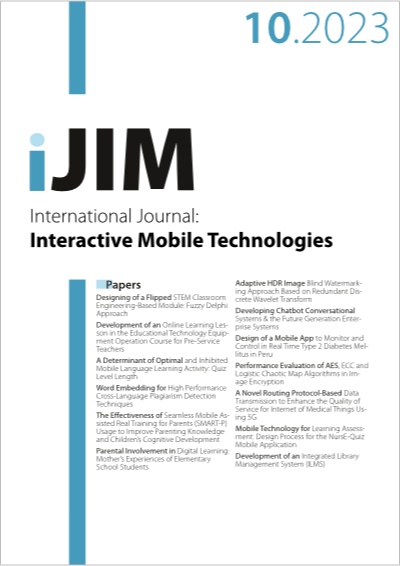A Determinant of Optimal and Inhibited Mobile Language Learning Activity
Quiz Level Length
DOI:
https://doi.org/10.3991/ijim.v17i10.38417Keywords:
Facilitation of M-Learning, Games, Learner analytics, Mobile language learning, Productive learning, Technology enhanced learningAbstract
Learner analytic driven research concerned with mobile app learner survivability. An app was developed to indicate productiveness of quiz app usage for global mobile assisted language learning (MALL). The research focused on inhibiting and optimizing effects of level length on total questions answered. How many questions per level leads to the highest total unique questions being answered? The research focused on nine-day cohort timeframes and included three phases: a small-scale pilot study to establish parameters, an exploratory stage undertaken within the parameters and finally the use of a quadratic regression predictive model. The null hypothesis (H0) was rejected. A one-way analysis of variance found a statistically significant difference in the mean productivity of the lengths. Results of a Tukey post hoc test (p < .05) suggests question sets with less than eight questions, or more than 15 questions, appear to inhibit MALL autonomous learning. Optimal level question sets appear to be between lengths 8-14. The results visually encapsulated by a quadratic regression model broadly support H1 and H2. Set 12 is the statistically most significant optimal load. Gains of up to 107% are reported for switching from suboptimal to optimal approaches.
Downloads
Published
How to Cite
Issue
Section
License
Copyright (c) 2023 Jason Richard Byrne

This work is licensed under a Creative Commons Attribution 4.0 International License.



